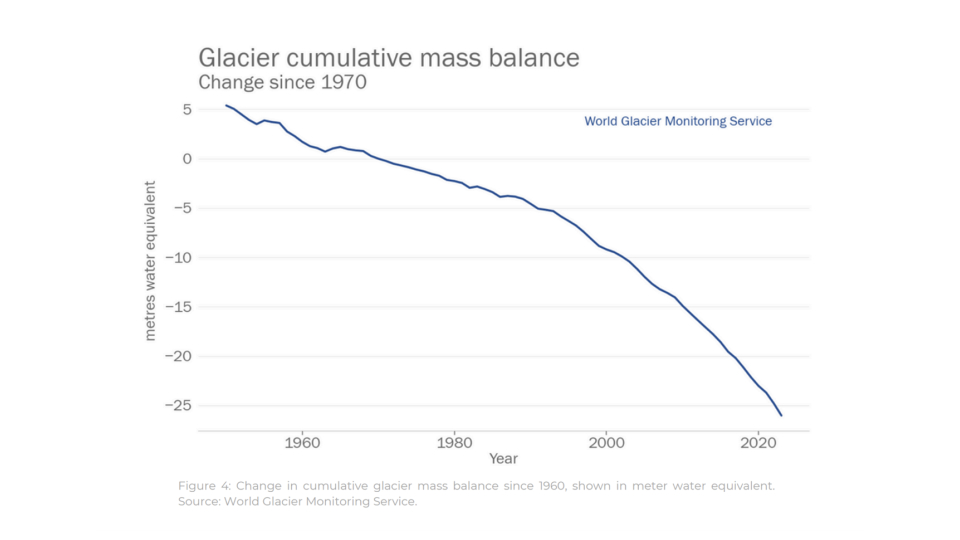WMO: 2024 on track to be the warmest year since record keeping began

The latest data indicate that 2024 will likely be the hottest year since record keeping began. The findings come from the World Meteorological Organization (WMO)’s State of the Climate Update, released on Monday to coincide with the opening of the COP29 UN Climate Change Conference in Azerbaijan. The report warns that the goals of the Paris Agreement are in jeopardy.
As the WMO announced on Monday, according to data available so far, global average temperatures in 2024 are on pace to surpass even 2023 – the current warmest year on record. Global mean surface air temperature from January to September of this year was 1.54 degrees Celsius above average as compared to the period between 1850 and 1900.
Just last week, the EU’s Copernicus Climate Change Service announced that it was “virtually certain” that 2024 would be the warmest year since recording began. The dataset compiled by Copernicus was among those analyzed by the WMO for its report.
The period between 2015 and 2024 was also the hottest decade since recording began, according to the WMO.
1.5 degree goal in jeopardy
The international community committed in the Paris Agreement to do what it could “to limit the temperature increase to 1.5˚C above pre-industrial levels.” This goal is in severe jeopardy, according to the WMO. Still, the organization is careful to note the necessity of considering a longer timeframe: “One or more individual years exceeding 1.5˚C does not necessarily mean” that the goal of limiting the rise in temperatures is unachievable. According to the WMO’s team of experts, long-term global warming is currently projected to be about 1.3 degrees over the pre-industrial average.
WMO Secretary-General Celeste Saulo said in a statement: “Recorded global temperature anomalies at daily, monthly, and annual timescales are prone to large variations, partly because of natural [phenomena] such as El Niño and La Niña.” El Niño contributed to warming in 2024 as well.
Saulo warned however that “it is essential to recognize that every fraction of a degree of warming matters.” Every rise in average temperature exacerbates climate extremes. “The record-breaking rainfall and flooding, rapidly intensifying tropical cyclones, deadly heat, relentless drought and raging wildfires that we have seen in different parts of the world this year are unfortunately our new reality and a foretaste of our future,” Saulo said.
Increasing greenhouse gas concentrations
The WMO also reports that the concentration of greenhouse gases in the atmosphere already reached record levels in 2023. Overall the concentration of carbon dioxide (CO2) has risen 51 percent compared to pre-industrial levels. “Real time data indicate that” greenhouse gas concentrations continued to rise this year. “This traps heat and causes temperatures to rise.”
The oceans too were hotter last year on average than in any year since recording began. Preliminary data indicate that temperatures are comparably high this year as well. Roughly 90 percent of the earth’s energy is stored in the ocean, according to the WMO. Ocean warming is a change that is “irreversible” for hundreds to thousands of years.

The WMO also reports an increasing rate of glacier loss. “In 2023, glaciers lost a record 1.2-meter water equivalent of ice – about five times the amount of water in the Dead Sea.” This was the largest loss since measurements began in 1953.
Melting glaciers also contribute to the accelerating rise in sea level. From 2014 to 2023, the global mean sea level rose at a rate of 4.77 millimeters per year – “more than double the rate between 1993 and 2002.” Last year, because of the El Niño effect, the rate increased even more rapidly. Preliminary data for the current year analyzed by the WMO show that thanks to the decline of El Niño the rate of sea level rise “has fallen back to levels consistent with the rising trend from 2014 to 2022.”
Worsening climate extremes
Weather and climate extremes have continued to exacerbate food insecurity and drive people from their homes this year, the WMO reports. Millions of people have suffered from dangerous heat. “Heavy precipitation, floods and tropical cyclones [have] led to massive loss of life.”
UN Secretary-General António Guterres said in a statement: “Climate catastrophe is hammering health, widening inequalities, harming sustainable development, and rocking the foundations of peace. The vulnerable are hardest hit.”
WMO Secretary-General Saulo said: “We urgently need to reduce greenhouse gas emissions and strengthen our monitoring and understanding of our changing climate. We need to step up support for climate change adaptation through climate information services and Early Warnings for All” – a WMO initiative to ensure that people across the globe are alerted to impending severe weather events.
The WMO’s State of the Climate report appears yearly. The current “Update” was published to coincide with the COP29 UN Climate Change Conference – the final version of the report will be published in March 2025.
This year’s COP runs from November 11 to 24 in the Azerbaijani capital of Baku. Nearly 200 countries are there to deliberate over ways to halt global warming and mitigate against its fatal effects. UN Climate Change Executive Secretary Simon Stiell admonished participants at the opening of the conference: “We cannot leave Baku without a substantial outcome.” (dpa / js)